Brownies Raise Funds for Children's Museum, ARC Launches $6 Million Campaign
- Details
- Written by Joanne Wallenstein
- Hits: 4500
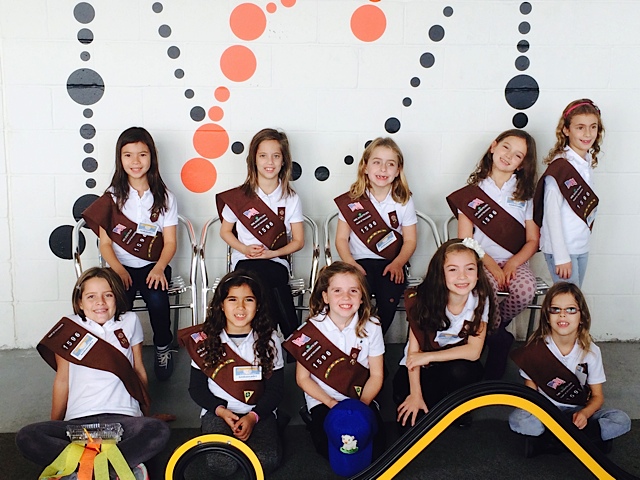 Fox Meadow Brownie Troop 1596 donated $1,000 to the Campaign for the Westchester Children's Museum in honor of Make a Difference Day. The Troop of 38 girls, mostly second graders, worked hard throughout 2015 to raise the funds by selling cookies. Joined by Troop leaders and Museum Board members Stacey Schutzer and Regina Han Jansky both of Scarsdale, the Brownies presented their donation to the Westchester Children's Museum, in a ceremony at the Museum alongside the Loukoumi Foundation who donated $20,000 to support development of an exhibit focusing on doing good deeds and reading appreciation. Fox 5 television news anchor Ernie Anastos attended the ceremony and personally congratulated the Brownies for their generosity.
Fox Meadow Brownie Troop 1596 donated $1,000 to the Campaign for the Westchester Children's Museum in honor of Make a Difference Day. The Troop of 38 girls, mostly second graders, worked hard throughout 2015 to raise the funds by selling cookies. Joined by Troop leaders and Museum Board members Stacey Schutzer and Regina Han Jansky both of Scarsdale, the Brownies presented their donation to the Westchester Children's Museum, in a ceremony at the Museum alongside the Loukoumi Foundation who donated $20,000 to support development of an exhibit focusing on doing good deeds and reading appreciation. Fox 5 television news anchor Ernie Anastos attended the ceremony and personally congratulated the Brownies for their generosity.
For further information, please call Tracy Kay, 914-421-4040 or Corinne Zola 917-991-9499
ARC of Westchester Hosts 400 Guests to Benefit Developmentally Disabled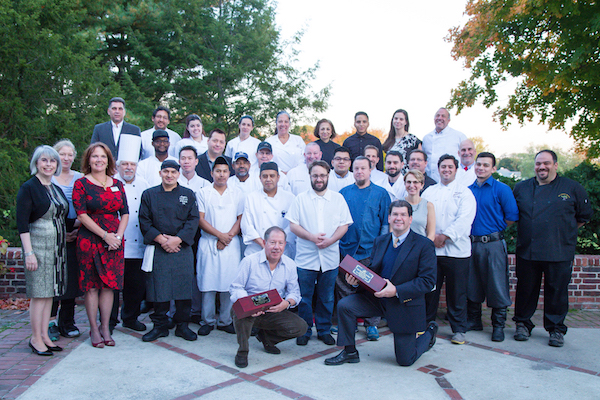 On Tuesday October 20, The Arc of Westchester Foundation hosted its premiere fundraising event, serving food and wine to over 400 guests at the Westchester Country Club in Rye. Throughout the evening attendees dined on delicious foods from local restaurants and sipped on a wide array of excellent wines, spirits and beers. Excitement grew as word spread about an important announcement planned for later in the evening.
On Tuesday October 20, The Arc of Westchester Foundation hosted its premiere fundraising event, serving food and wine to over 400 guests at the Westchester Country Club in Rye. Throughout the evening attendees dined on delicious foods from local restaurants and sipped on a wide array of excellent wines, spirits and beers. Excitement grew as word spread about an important announcement planned for later in the evening.
At the end of the live auction, bright Hollywood lights began to flash, celebratory music played and Campaign Co-Chairs Bill Healey and Laura Saggese took the stage to make the big announcement of the evening: the public launch of Arc of Westchester Foundation's The Arc of a Life Campaign. This $6 million campaign has raised more than $3 million in donations and commitments, and it will now aim to generate an additional $3 million through public outreach.
http://www.arcwestchester.org/campaign
"The Arc of Westchester Foundation board has formed a committee to raise additional funds to support the comprehensive, innovative program initiatives that allow us to keep our promise of providing quality services throughout the entire arc of a life," said Healey. "Our goal is to raise $6 million and I'm pleased to announce that we have now reached the halfway mark!"
"Staying ahead of shifting needs, demographics, funding resources and paradigms for providing services is an immense challenge at Arc of Westchester," explained Nancy Patota, Executive Director for Arc of Westchester's Foundation. "This Campaign was designed to off-set those challenges and maintain our status as the largest organization in Westchester County serving individuals of all ages with autism and other developmental disabilities. As an organization, we support the full arc of one's life, and this Campaign has already launched several innovative programs that have helped us continue to provide outstanding support to the 2,000 individuals and their families who depend on us every day."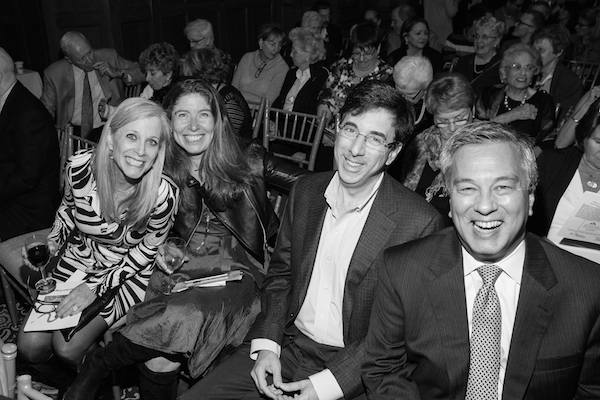
Volunteer Firefighters Celebrate Centennial
- Details
- Written by Joanne Wallenstein
- Hits: 3676
 Scarsdale Volunteer Fire Company #2 celebrated it centennial anniversary Saturday night at the Scarsdale Golf Club. On hand to commemorate the milestone with the active and retired members of Company #2 were representatives from volunteer Companies #1 and #3, career firefighters, town trustees, professional managers of the village, mayor Jonathan Mark and assemblywoman Amy Paulin. The event, in a broad sense, was a celebration of all who strive to make Scarsdale a better place.
Scarsdale Volunteer Fire Company #2 celebrated it centennial anniversary Saturday night at the Scarsdale Golf Club. On hand to commemorate the milestone with the active and retired members of Company #2 were representatives from volunteer Companies #1 and #3, career firefighters, town trustees, professional managers of the village, mayor Jonathan Mark and assemblywoman Amy Paulin. The event, in a broad sense, was a celebration of all who strive to make Scarsdale a better place.
Founded in 1915, the role of Company #2 has changed little in 100 years. Company #2's secretary, R.C. Knickerbocker wrote in the May 12, 1920 edition of the Scarsdale Inquirer and urged town residents to keep the Fire Department phone number - back then it was SCARSDALE 100 - handy by the phone:
"Scarsdale Fire Co. No. 2 is composed of residents of Scarsdale who have voluntarily offered to serve our Village as fireman and who at all times are ready and willing to assist their neighbors of the Village. These men should enjoy the appreciation of every resident of Scarsdale.
When a fire occurs and the lives of dear ones and treasured possessions are endangered, the prompt attendance of men, drilled and experienced in fire fighting, is of inestimable advantage, but many do not think of the disadvantage to these fireman who may have jumped from a warm bed into a cold wet night, actuated only by a desire to help others".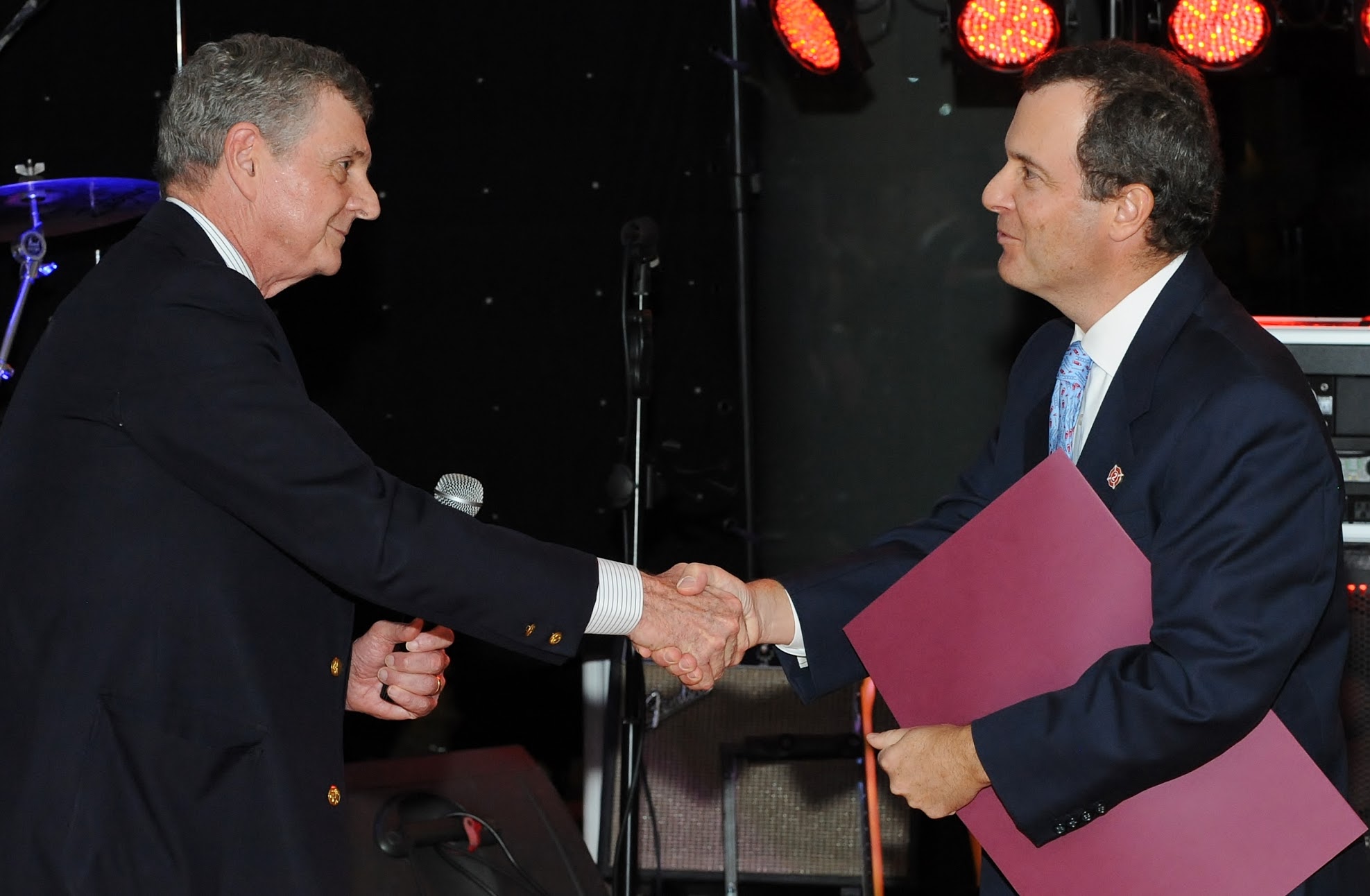
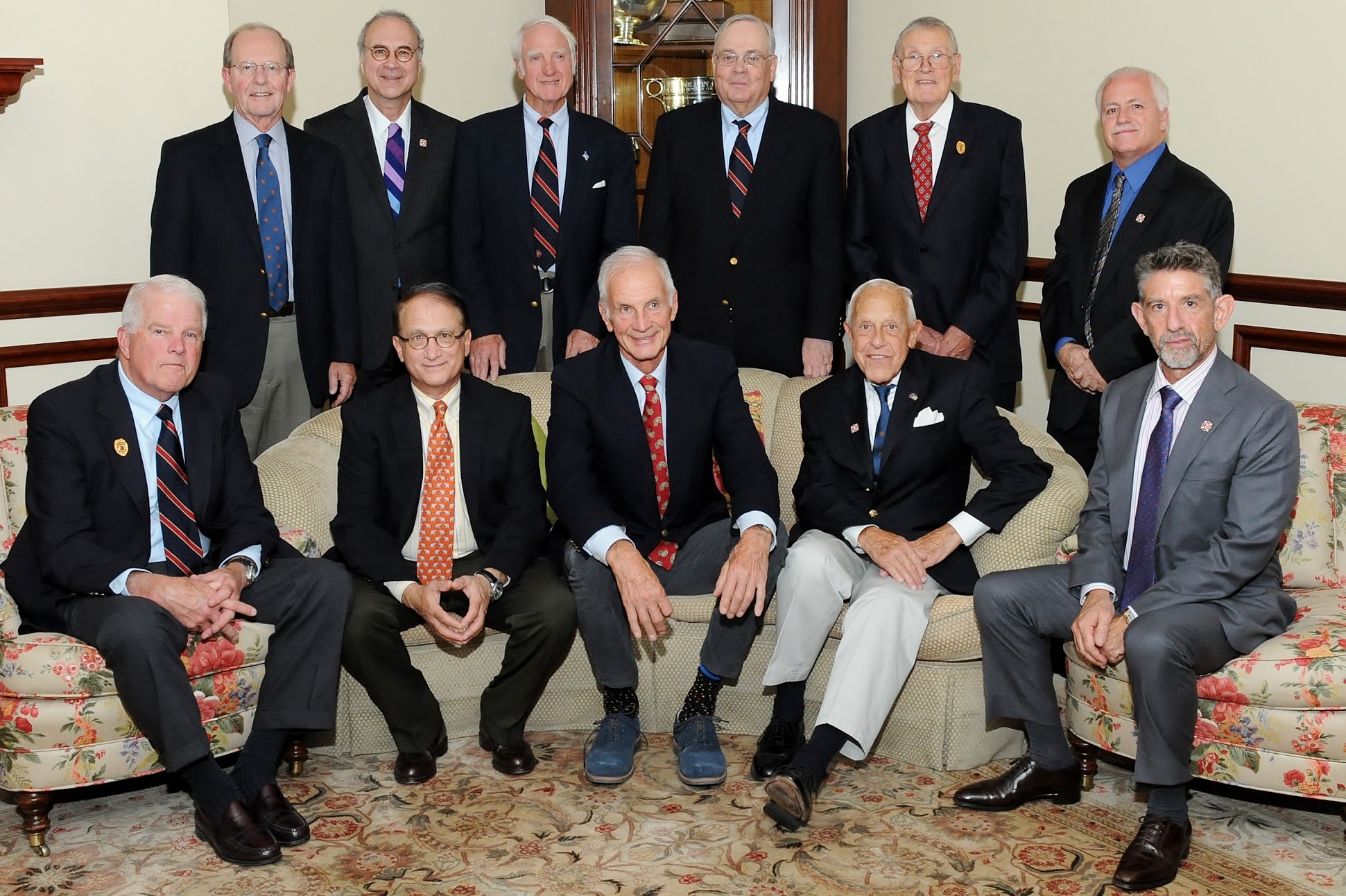
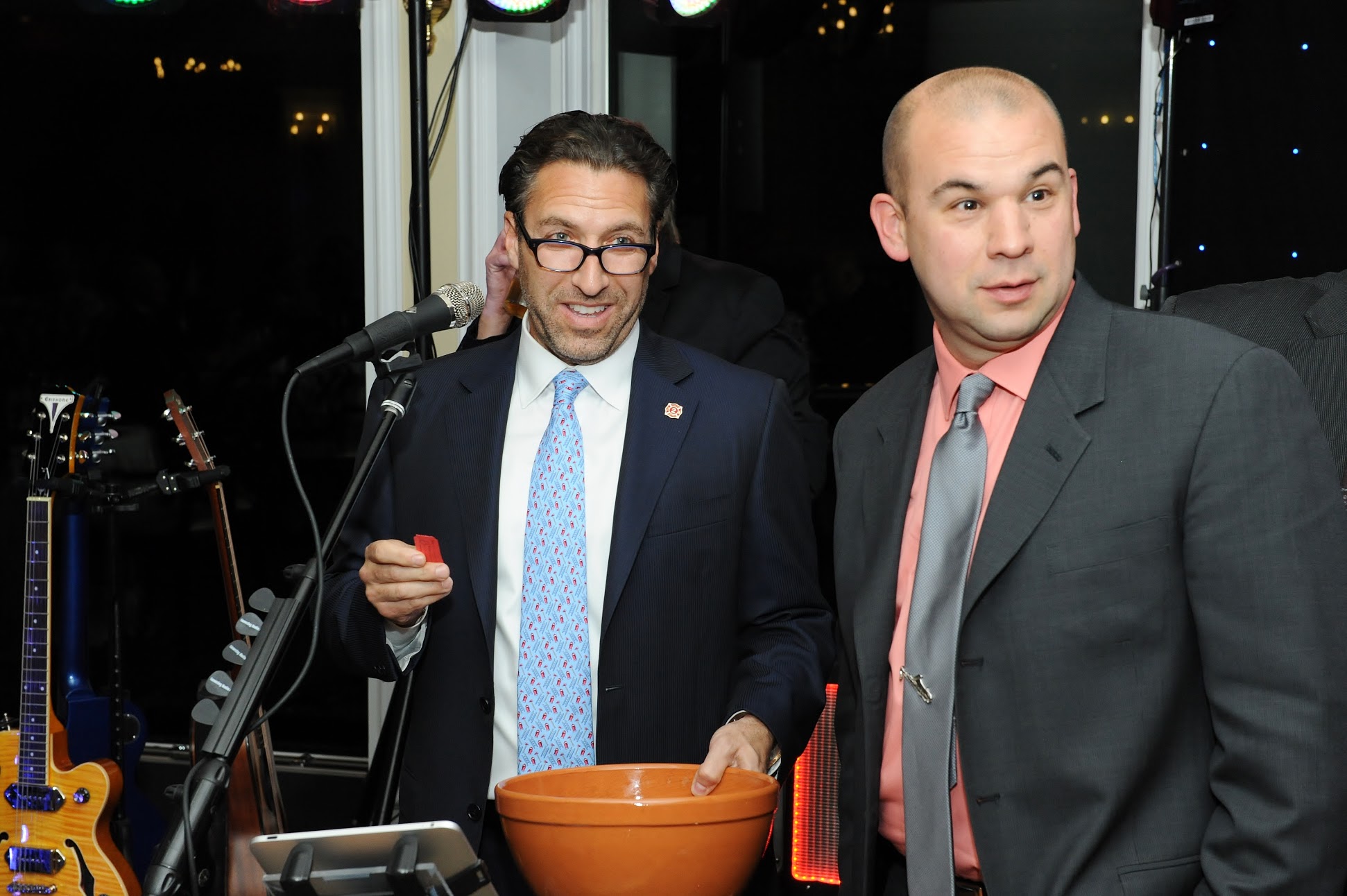
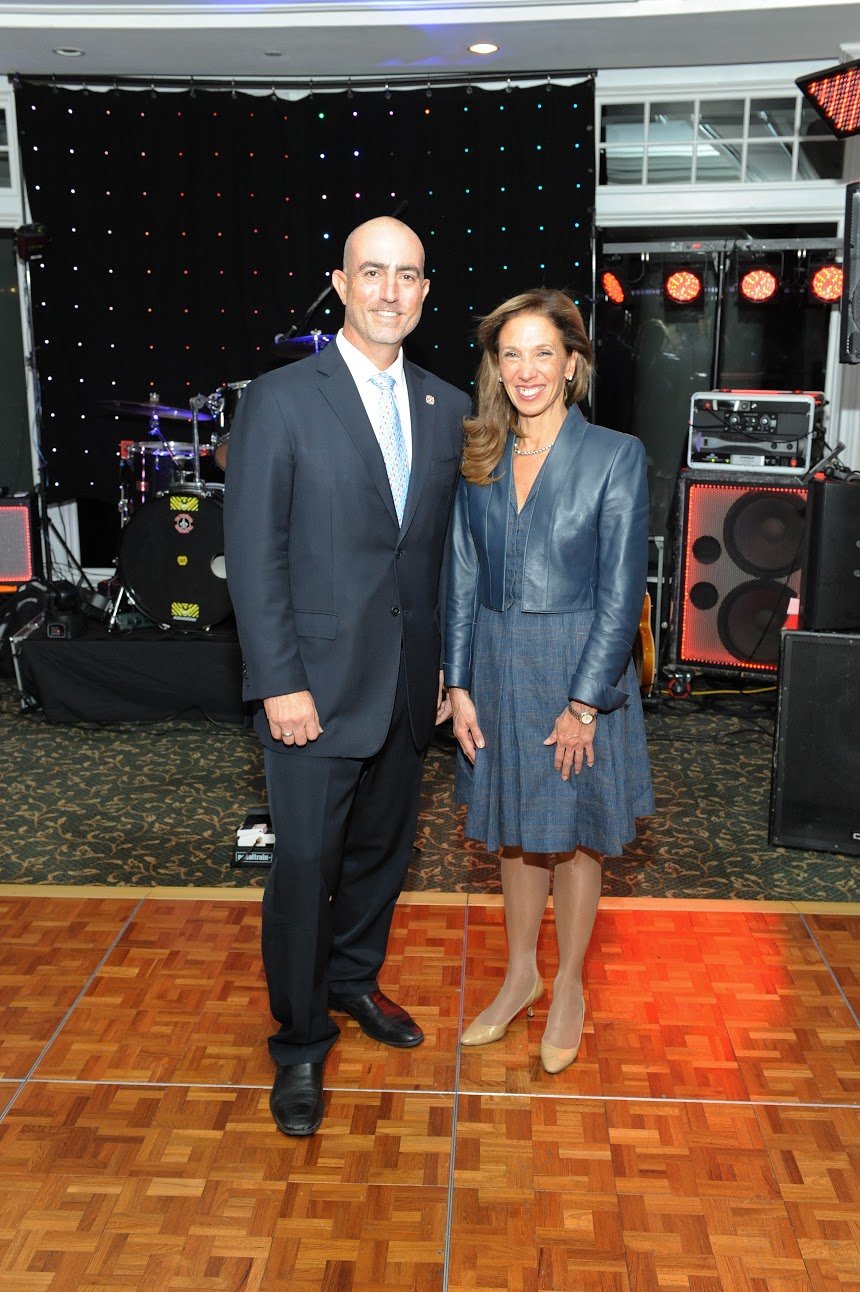
Anne Moretti Visits Burundi’s Forgotten Refugees
- Details
- Written by Joanne Wallenstein
- Hits: 7264
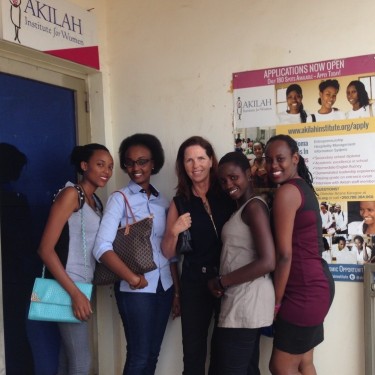 Scarsdale's Anne Moretti fell in love with lions and Africa when she was in grammar school and saw the movie Born Free. She loved the people, the animals and the beautiful landscape of Africa. Over the years, she "became more interested in the African people, the culture, the politics, the feel of the unspoiled earth and the more relaxed way of life."
Scarsdale's Anne Moretti fell in love with lions and Africa when she was in grammar school and saw the movie Born Free. She loved the people, the animals and the beautiful landscape of Africa. Over the years, she "became more interested in the African people, the culture, the politics, the feel of the unspoiled earth and the more relaxed way of life."
She studied African politics at Georgetown, and spent a year in France where she met several medical students from Burundi. She worked with them and constantly discussed politics. She went to Columbia University for my Master's Degree in Economics, hoping to return to Africa (I had spent a summer in southern Africa in 1979). When she didn't get the job at United Nations that she wanted she accepted a job on Wall Street at Irving Trust Company. She needed the money, so she took it. Since she spoke Chinese, she was assigned to cover Asia and her husband to be, Mike Moretti was assigned to cover Africa. Well, since she was interested in Africa, and Mike was too, that all worked out. Mike grew up here in Scarsdale, so they ended up here.
She continued her interest in Eastern Africa over the past 35 years and when her son Luke went to Vanderbilt Anne noticed an article on the University's website about a young Vanderbilt alum named Elizabeth Dearborn-Davis who went to Rwanda and started a college for women.
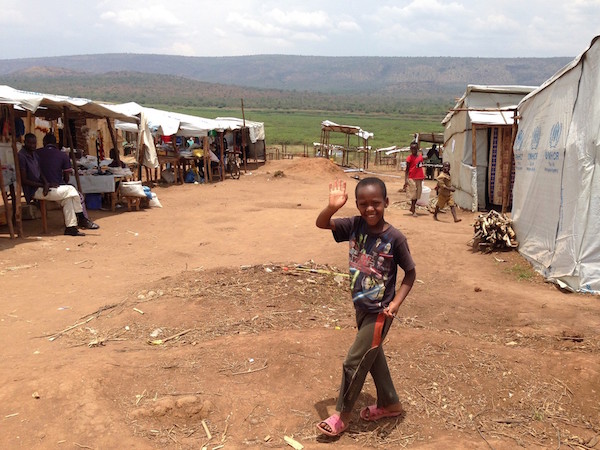 Anne explained, "Ah! I thought, that is what I always wanted to do .... make an impact in an area of Africa which I love and where people are working so hard to make a future for themselves. Elizabeth did that. She is a phenomenon and someone to watch! I am so impressed by her and by the accomplishments of the young women of Akilah a college for woman. Mike and I have been supporters of Akilah (a 501c3 corporation) for the past several years. This year, there is an acute situation due to the political crisis in neighboring Burundi where Akilah's sister campus was forced to close in April due to political unrest and an atmosphere of violence. The girls at that campus ALL want to go to Rwanda to continue their studies. 44 girls have the accreditation needed in Rwanda, and it appears that they are finding host families in Rwanda where they will live. They want to continue their studies at Akilah, in Rwanda, and that requires additional funding."
Anne explained, "Ah! I thought, that is what I always wanted to do .... make an impact in an area of Africa which I love and where people are working so hard to make a future for themselves. Elizabeth did that. She is a phenomenon and someone to watch! I am so impressed by her and by the accomplishments of the young women of Akilah a college for woman. Mike and I have been supporters of Akilah (a 501c3 corporation) for the past several years. This year, there is an acute situation due to the political crisis in neighboring Burundi where Akilah's sister campus was forced to close in April due to political unrest and an atmosphere of violence. The girls at that campus ALL want to go to Rwanda to continue their studies. 44 girls have the accreditation needed in Rwanda, and it appears that they are finding host families in Rwanda where they will live. They want to continue their studies at Akilah, in Rwanda, and that requires additional funding."
You can help these girls graduate college so that they can give back to their families and communities they seek to serve. Here's the link to the fundraiser page:
Moretti recently travelled to Rwanda for two purposes: to visit the school and see what she could do to help the Burundian students who have fled to Rwanda, and to see firsthand what is happening to refugees who have been forced out of their homes in Burundi into camps in Rwanda.
Here is an excerpt from her blog about her trip to Mahama, Rwanda where approximately 44,000 Burundi refugees are being housed.
From Anne's Blog:
As I was preparing to leave, I walked into the dusty white UNHCR (United Nations High Commissioner for Refugees) tent to say a quick goodbye to the camp director.
There were several men, all new arrivals to the camp, sitting quietly on a wood bench along the wall, waiting to be processed into the camp. A twenty-something Burundian woman at the end of the bench stood up as she tried to console a tiny baby wrapped around her slim waist in a traditional African scarf.
Through my interpreter, I asked her how she had come to be here at Mahama. 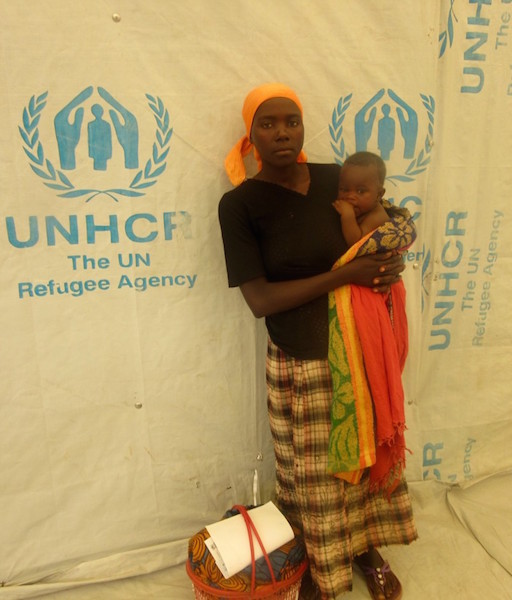 Speaking softly in Kirundi, she said that when the violence began in April, she was too pregnant to travel. Her baby girl was born in May, via C-section, and the father abandoned them at the hospital.
Speaking softly in Kirundi, she said that when the violence began in April, she was too pregnant to travel. Her baby girl was born in May, via C-section, and the father abandoned them at the hospital.
Though she hadn't healed well from the baby's delivery, and she had barely enough money for the bus to take her and her baby across the border into Rwanda, she left Burundi with just a little reed basket which held a few items for her baby. Once they arrived in Rwanda, she paid one of the local moped drivers to transport her over the winding and rutted, red dirt roads to Mahama.
Standing there with dusty sandals and her naked infant daughter wrapped across her chest, she stared at us with big eyes, wide but expressionless. The baby kept crying. I asked if she were nursing, and she said yes, but it was watery, with no milk. I asked if she had eaten, and she shook her head slowly. No, she said, she hadn't eaten for days.
What was shocking to me was not this young mother's story, but that stories like this are so common among the refugees in this camp. Thousands of the residents in Mahama are unaccompanied minors, with no parents, or are young adults traveling alone.
There are farmers and teachers, college students and toddlers stuck here, waiting for order to return to their country. No one I spoke with seemed to think that would happen anytime soon, and there is no talk of returning home for fear of reprisals. Once a person is registered as a refugee, they are viewed suspiciously by the Burundian police, government, and the Inbonerakure.
As the Syrian refugee crisis has pricked the conscience of Western governments into taking action to help these populations, the crisis of Burundian refugeeism has gone largely unnoticed. It began last April when President Nkurunziza announced his intention to run for a third term as president, despite a constitutional two-term limit.
Since then, there has been a huge surge in violence and killings, and over 200,000 Burundians have fled their country fearing persecution amid the threat of political violence. They travel for days, by bus, on bikes, or on foot to cross the borders, headed for refugee camps in neighboring Rwanda, Tanzania, the DRC, and Kenya.
Political persecution, violence, and an atmosphere of 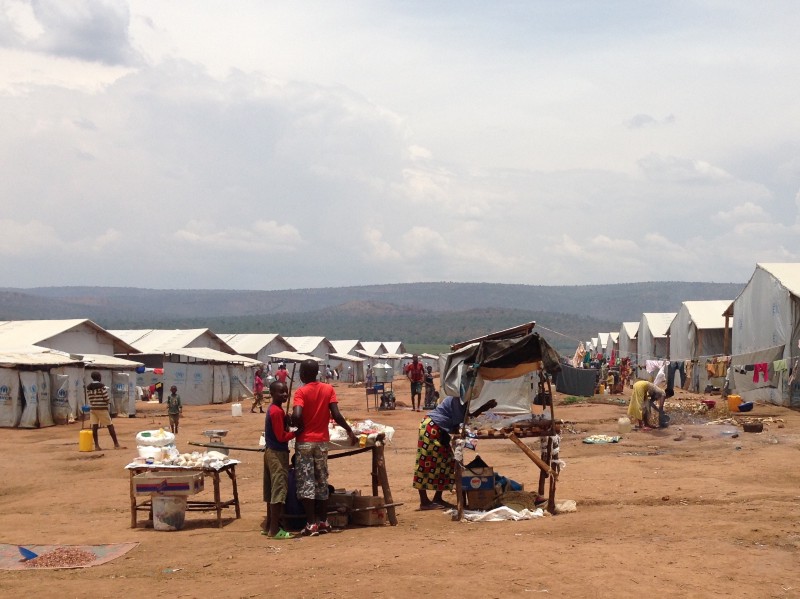 intimidation has ebbed and flowed in Burundi over the past six months, but the absence of any independent news media makes it difficult for outsiders to verify daily reports of police torture and interrogation.
intimidation has ebbed and flowed in Burundi over the past six months, but the absence of any independent news media makes it difficult for outsiders to verify daily reports of police torture and interrogation.
The Inbonerakure, a youth militia armed by Burundi's ruling party, routinely threatens people they accuse of opposing President Nkurunziza. Prior to the July elections, the U.N. stated that any elections held in this climate of widespread intimidation would be considered neither free nor fair. Nonetheless, elections were held and were boycotted by the opposition. President Nkurunziza claimed victory and a mandate for staying another five years in office. Police attacks on citizens, clandestine killings, and widespread fear continue unabated.
Burundi's sister country to the north is Rwanda, with whom it shares a Belgian colonial history and the same ethnic populations of Hutu and Tutsi. Rwanda has worked hard in recent years to overcome its dark history of the 1994 genocide. The country has moved noticeably forward, making encouraging strides in its economy, health services, educational system, roads, and infrastructure.
Burundi, on the other hand, has slid farther into economic decline and continues to rank as one of the world's poorest countries.
In escaping their home country, tens of thousands of Burundians have crossed into Rwanda, where they have been welcomed and assisted, whether in the private homes of friends or the growing refugee camps. These camps have been set up quickly to accommodate the exploding numbers seeking refuge.
I recently visited the largest refugee camp, Mahama, located in Rwanda's Kirehe District (near the Tanzanian border). As of September 30, there were approximately 44,000 Burundian refugees at the camp, with 30-100 more arriving every day.
UNHCR runs the Mahama Camp in conjunction with the Rwandan Ministry of Disaster Management and Refugee Affairs (MIDIMAR). Among the NGOs operating at the Camp, the more visible ones include World Food Programme, Save the Children, American Refugee Committee (ARC), UNICEF, PLAN International, UKAid, and World Vision. Coordinating supplies, NGO activities, and handling the daily care of 44,000 refugees is an enormous undertaking, yet Mahama has organized quickly and prioritized the more important aspects of daily life.
The Camp Director, Aristarque Ngoga, is fully committed to improving life for the refugees. Echoing the sentiments of many Rwandans, Mr. Ngoga expressed the gratitude his country feels towards Burundians in remembrance of their humanitarian assistance to them during the 1994 Genocide.
In addition to refugee camps, many thousands of Burundians have been taken in by Rwandans privately, no matter how meager their financial situation.
Given the worsening political climate in Burundi, Mahama officials are actively preparing for even more refugees. More permanent structures are currently being built to transition the thousands now living in tents to a more stable living environment.
Schools have been set up for the children who study in makeshift classrooms in tents. There is a critical lack of school supplies, but the daily teaching of children in both primary and secondary school is one of the highest priorities at Mahama.
Health-wise, the camp population is not experiencing any serious diseases, and there were reportedly some mild cases of diarrhea and conjunctivitis. The camp works hard to educate the refugee population in sanitation standards to thwart more serious diseases like malaria and cholera.
World Vision recently installed a water filtration system with assistance by UNHCR, UK Aid, and a few other organizations. This has provided camp residents with abundant access to clean water, trucked in from the local Akagera River, just down the hill from the camp.
Food consists of dry grains measured out on a large scale and poured into whatever container a refugee brings to collect the food.
There are orderly queues of refugees every day who wait patiently for rations. The monthly rations of rice, dry maize, corn, and beans are given out with cooking oil to last a month. Weighed out on a scale, amounts are multiplied times the number of people in your family unit.
Life is easier for families with multiple members than individuals living solo in the camp because kitchen sets are more available for larger family units and there are more food options available. Also, in Burundian culture, women do the cooking, so men in refugee camps often find themselves facing new challenges if they arrive alone at a camp or if they are not part of a family unit which includes women. They can be more prone to malnourishment since they don't know how to cook the dry foods they receive. Women are generally supportive, but this can be an issue for some refugees.
While I was there, there were long queues of people waiting for a bar of soap. Another line of women were waiting to pick up sanitary napkins. I viewed the facilities where the grains are stored, including beans, rice, maize and corn. Although supplies are kept clean and orderly, and are well-controlled, there is a serious shortage of nearly every resource, from food to clothing to medicine to educational materials.
Burundian refugees are the forgotten refugees. U.N. assistance and NGOs are spread thin. Outside organizations provide extra supplies, but the camp is in desperate need for additional assistance, especially as the crisis in Burundi continues to worsen.
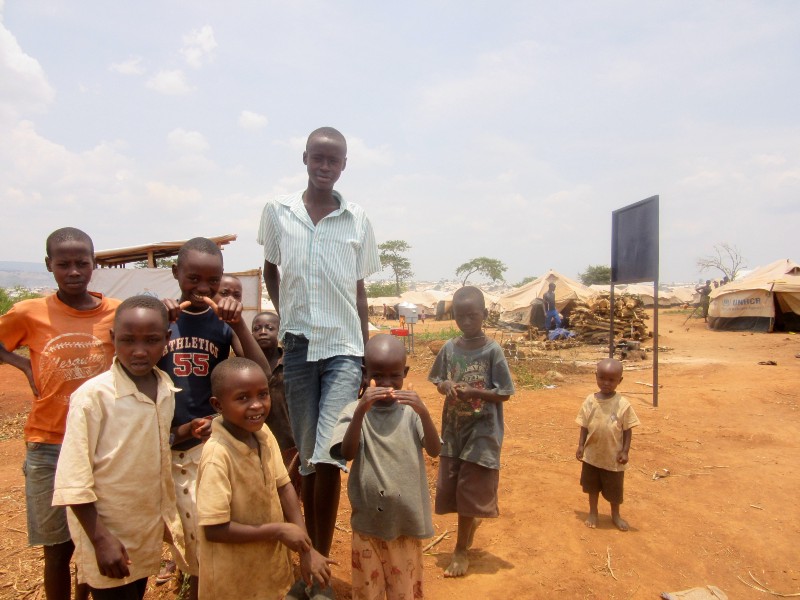 Mahama is also a story of children. Nearly half of the refugees are under 18 years old, and thousands of them are unaccompanied minors.
Mahama is also a story of children. Nearly half of the refugees are under 18 years old, and thousands of them are unaccompanied minors.
Many have travelled alone or with siblings. They have witnessed things that children should never see. While they run through the Camp with a smile on their face and hope in their heart, they are barely surviving on minimal food, and they going to school in tents hoping for a better tomorrow.
At Save the Children, I watched as three guys assembled a wheelchair in a matter of minutes. Many elderly and disabled people are in need of wheelchairs, and only a small fraction have access to them.
Mahama depends on donations of wheelchairs from various organizations. Alfred Twahhirwa, who heads up Save the Children's activities at Mahama, told me how he handles the ongoing need for children's clothing and medical supplies. They keep lists of the most needy, and whenever they receive donations of clothing and other goods from churches and other organizations, the items are distributed to the residents identified as in most urgent need.
There are many young adults at the camp. Before they fled their country, these young men and women worked as nurses, teachers, farmers, and salespeople. Many were attending college.
They want to return to their home and to their lives, but they cannot. None of the refugees I spoke to would ever consider going back to Burundi now, for safety reasons.
They have nothing to do here, but they're creatively trying to move ahead in their lives. An enterprising group created a club at Mahama to learn English. Packed in a tent, the eager students squeezed together on wooden benches as they shared the excitement of learning English.
Burundi is still a French-speaking country and has become isolated in central east Africa for its lack of English-speaking alliances. Rwanda transitioned five years ago, from French to English, and the benefits of tourism and doing business with its Anglo-speaking East African partners have helped the country immensely.
Among the numerous NGOs operating at Mahama, I noticed no French or Belgian organizations, which is curious given those countries' integral connection with Burundi's past.
The cause of Burundi's refugee crisis is identifiable, and the ensuing human tragedy is escalating, but there is little news coverage of these stoic refugees whose daily lives consist of waiting outside of their country in limbo, in a camp that is more like an open prison where they are free to come and go, but there is nothing outside the camps for them. They cannot go home, and they cannot move ahead with their lives.
Scarsdale Foundation Grants Scholarship Funds
- Details
- Written by Joanne Wallenstein
- Hits: 3987
 The Scarsdale Foundation has awarded $110,000 in scholarship monies for the 2015-2016 academic year. These need-based financial stipends, awarded annually to deserving college students who have graduated from Scarsdale High School or were Scarsdale residents during their high school years, are intended to offset some of the college expenses of students who are going into their sophomore, junior and senior years.
The Scarsdale Foundation has awarded $110,000 in scholarship monies for the 2015-2016 academic year. These need-based financial stipends, awarded annually to deserving college students who have graduated from Scarsdale High School or were Scarsdale residents during their high school years, are intended to offset some of the college expenses of students who are going into their sophomore, junior and senior years.
In the face of spiraling tuition costs (more than $60,000 a year at many private schools, and often $40,000 a year at state schools), the Foundation expects no letup in the number of applications for assistance. "Contrary to popular belief, we in Scarsdale do not live in a bubble," said Scarsdale Foundation President Evelyn Stock, "We are not immune to the devastations that life may bring- job loss, economic downturns, divorce, crippling health issues, and death."
The Foundation is embarking on its 2015-2016 fundraising campaign for this critically important scholarship initiative. Foundation trustees encourage Scarsdale families to make a tax-deductible donation for student scholarships or even a bequest directly to the Foundation, a 501(c)(3) organization, by writing to the Scarsdale Foundation, PO Box 542, Scarsdale, NY 10583, or by contacting president Evelyn Stock at em.stock87@gmail.com. More information is available at www.scarsdalefoundation.org.
"Please help the Scarsdale Foundation to send the message that Scarsdale cares about the education of all of our children!" said President Stock. "These are our families and our children. Our role as a community is to help!"
Concours Brings Vintage Cars to the Village
- Details
- Written by Carly Glickenhaus
- Hits: 7495
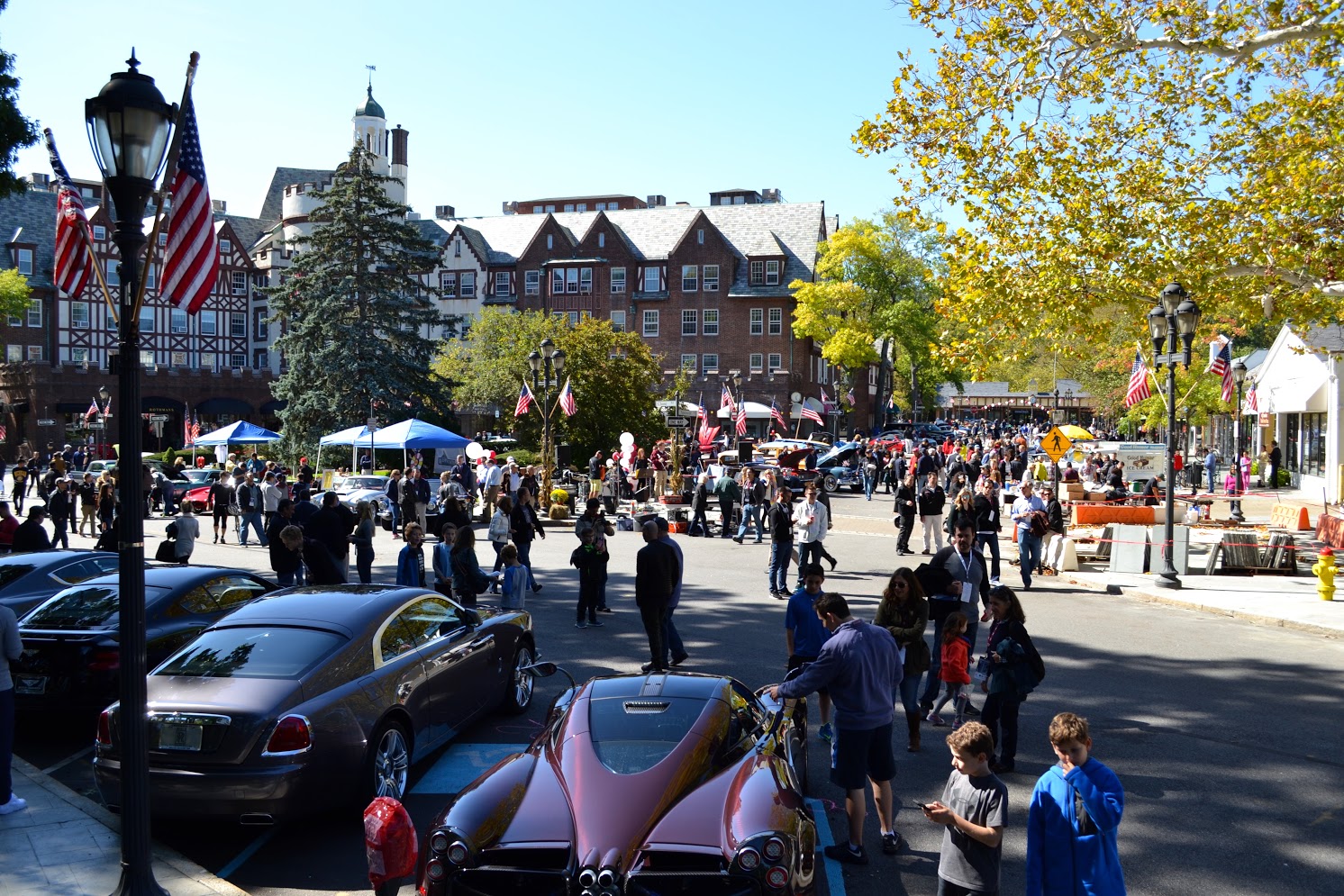 On a typical day in Scarsdale, village parking spots are aligned with SUV's and late model foreign cars -- but on Sunday October 4 the Village looked a bit different: A hundred vintage cars were on display at the Scarsdale Concours D'Elegance, a car show and community event for connoisseurs and novices alike. Though Hurricane Joaquin threatened to delay the show, the storm veered right toward the open seas leaving clear skies for visitors to enjoy the display.
On a typical day in Scarsdale, village parking spots are aligned with SUV's and late model foreign cars -- but on Sunday October 4 the Village looked a bit different: A hundred vintage cars were on display at the Scarsdale Concours D'Elegance, a car show and community event for connoisseurs and novices alike. Though Hurricane Joaquin threatened to delay the show, the storm veered right toward the open seas leaving clear skies for visitors to enjoy the display.
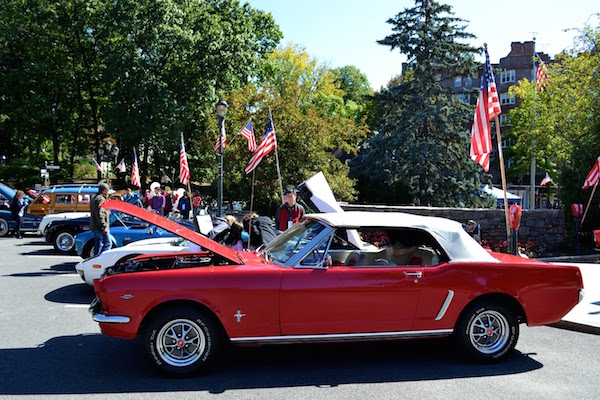 The cars and owners hailed primarily from the Tri-State area. Many of the cars in the show would not only attract attention but also wreak havoc on NY's interstates as they were certainly not built for today's roadways.
The cars and owners hailed primarily from the Tri-State area. Many of the cars in the show would not only attract attention but also wreak havoc on NY's interstates as they were certainly not built for today's roadways.
The Scarsdale Concours has a history of young leadership, as Evan Cygler and Dennis O'Leary founded the show when they were students at Scarsdale High School. Before they even had their driver licenses, Cygler and O'Leary had developed a passion for cars and car shows and took the initiative to find supporters in the village. 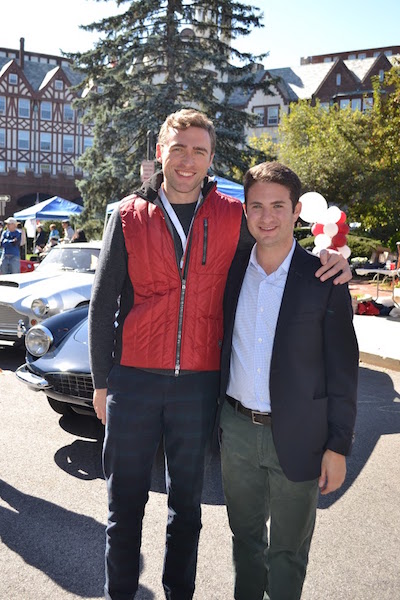 By reaching out to interested members of the community and local government, their idea grew into a popular event that has sustained interest over the twelve years since its establishment. According to O'Leary, what is most unique about this show is its venue. Car shows are traditionally on grass, but Scarsdale's has a prime location in the village, surrounded by local business to maintain a steady flow of guests throughout the afternoon. Cygler and O'Leary have passed the baton to new leaders to organize the event, but return every year to see their legacy in action, with the hopes that the show will continue to get people excited about cars and bring the community together.
By reaching out to interested members of the community and local government, their idea grew into a popular event that has sustained interest over the twelve years since its establishment. According to O'Leary, what is most unique about this show is its venue. Car shows are traditionally on grass, but Scarsdale's has a prime location in the village, surrounded by local business to maintain a steady flow of guests throughout the afternoon. Cygler and O'Leary have passed the baton to new leaders to organize the event, but return every year to see their legacy in action, with the hopes that the show will continue to get people excited about cars and bring the community together.
This year, Scarsdale High School Senior Ben Hasson begins working on the show eight months before the event. Having participated since he was 13 years old, Hasson reflects, "Being on the board of the Scarsdale Concours has provided me with four years of an excellent learning experience... I have been learning how to communicate with companies and individual adults in a professional manner." He devotes time to attending other car shows to look for owners interested in displaying their "third child" at the Scarsdale 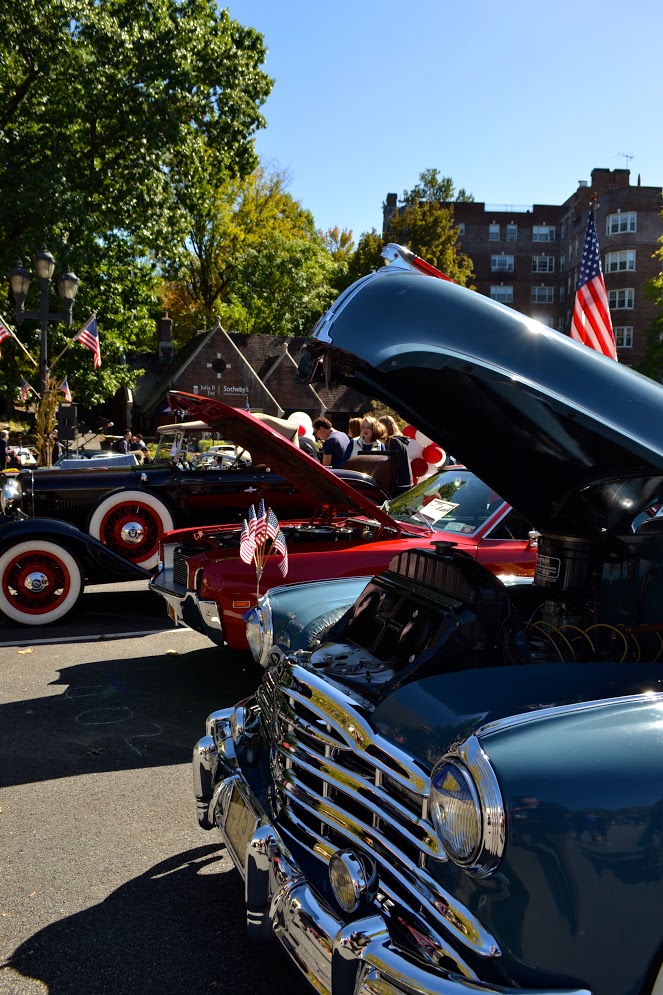 show. While the Scarsdale Concours is a family event, it also has a solid reputation as a great car show among collectors. The community vibes and pleasant setting of the event appeals to many owners, while others enjoy competing. Sponsors like Black Rock choose winners to award its prize and professional judges, who evaluate the car's physical appearance and condition and award the Best Muscle Car and the Best Sports Car. Many of the owners return year after year.
show. While the Scarsdale Concours is a family event, it also has a solid reputation as a great car show among collectors. The community vibes and pleasant setting of the event appeals to many owners, while others enjoy competing. Sponsors like Black Rock choose winners to award its prize and professional judges, who evaluate the car's physical appearance and condition and award the Best Muscle Car and the Best Sports Car. Many of the owners return year after year.
Essential in its purpose is the show's commitment to serve local charities. Thanks to passionate and dedicated helpers like Hasson, the show has raised more than $300,000 for local charities over the past twelve years. This year, the money went to Scarsdale and Edgemont Family Counseling Service, Warriors and Family Assistance Fund, and the Scarsdale Foundation.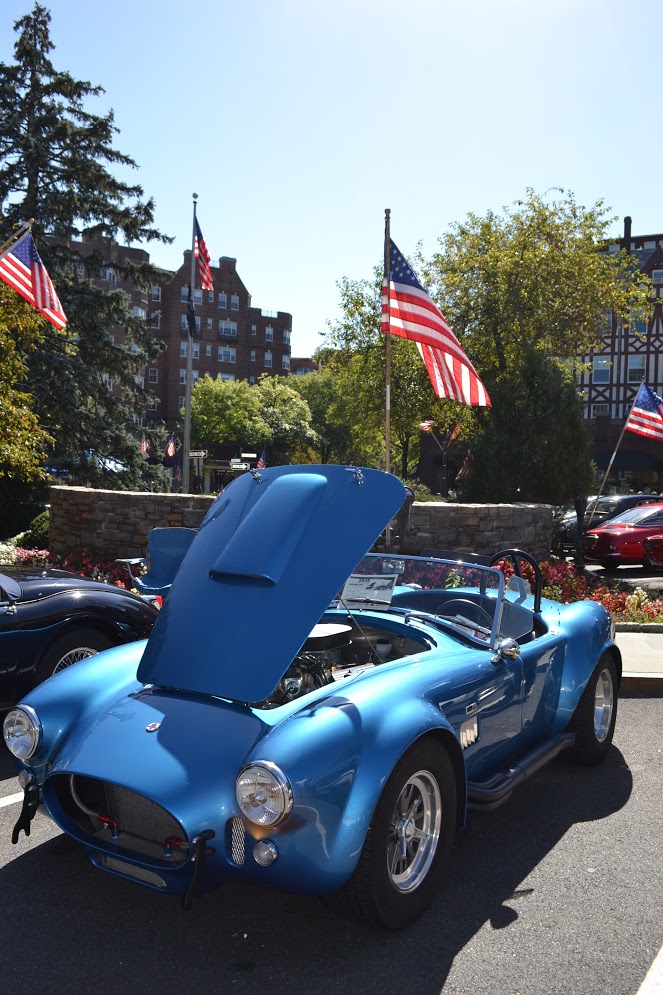
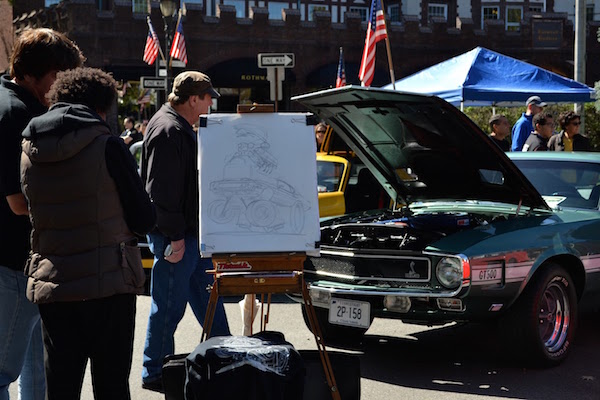

Contributor Carly Glickenhaus is a Senior at Scarsdale High School. She is the goalkeeper on the Girls' Varsity Soccer team and enjoys writing and photography.
AWARD WINNERS - 12th Annual Scarsdale Concours d'Elegance
Scarsdale, New York - Sunday, October 4th, 2015
BEST IN SHOW: 1958 Jaguar XK 150-S Cabriolet, David Porter
BEST ITALIAN CAR: 1953 Alfa Romeo 1900 CS Berlinetta by Pinin Farina, Michael Bruno
BEST AMERICAN CAR: 1958 Chevrolet Impala Sport Coupe, Kevin Kingsland
BEST GERMAN CAR: 1964 Mercedes-Benz 230 SL, Jerry Robinson
BEST ENGLISH CAR: 1960 Aston Martin DB4 by Carrozzeria Touring, Michael Odierna
BEST COMPETITION CAR: 1931 MG M "Boattail," Malcolm Pray family
BEST MUSCLE CAR: 1969 Ford Shelby GT 500 Sportsroof, Marcel Perlman
BEST BRITISH MUSCLE CAR: 1987 Aston Martin V-8 Vantage, Tom Papadopoulos
BEST FERRARI: 1968 Ferrari 365 GTC, Bill Woodburn
BEST PORSCHES: 1965 356C Coupe, Joseph Catanzaro and 1973 911E, Dwyer Family
MOST EXCITING CAR: 1980 Ferrari 512 BB Berlinetta Boxer, John Curreri
MOST OUTSTANDING COACHWORK: 1972 BMW 3.0 CS, Gary Studnik
FOUNDER'S CHOICE: 1967 Sabra Sport made in Haifa, Israel; Elias Wexler
JUDGES' AWARD: 1936 Bentley Derby Drophead Coupe, Michael Fitzsimons
CONCOURS BOARD AWARD: 1932 Ford Model 18 V-8 Roadster, Michael DeAngelis
BLACKROCK BEST INVESTMENT AWARD: 1961 Chevrolet Corvette 348 with fuel injection, Larry Sachs
CHUBB COLLECTOR CAR INSURANCE AWARD: 1948 Pontiac 8 Woody, James Bruno
MAROON & WHITE COMMUNITY AWARD: 1968 AMC AMX Fastback, Robert Carlsen
PRESERVATION AWARD: 1964 Cadillac Fleetwood Sixty Special with 37,750 original miles, Leif Waller













